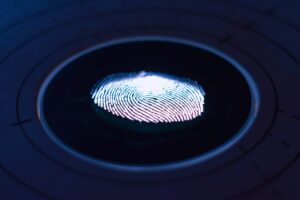
ERM in the time of Coronavirus
Many companies do not give adequate attention to their Business Continuity plans. This is likely due to the “normalcy bias” — the assumption that a disaster is unlikely because the chance of any one disaster happening is low, and because one hasn’t experienced a disaster recently.
Why is it flawed? Mere statistics. To illustrate: the probability of flipping a quarter ten times in a row and getting heads every time is extremely low, 0.09%. However, if you try it daily for three years, it becomes almost certain that it will happen at least once.
Similarly, each possible cause of outage or disaster is individually unlikely. But over a long period of time, many unlikely things add up to a certainty. That some form of disaster (whether hurricane, cyber-attack, or epidemic) will occur is a “when, not if” situation.
When a disaster does happen, 40 to 60 percent of effected businesses will never re-open according to research from FEMA. Companies would be well advised to prepare for all identified risks.
At the time of writing this, we may have just such an identified risk: the novel coronavirus SARS-CoV-2 (or COVID-19). The Center for Disease Control and the Department of Homeland Security told businesses last week to begin preparing for disruptions due to an increasingly likely outbreak in the US.

Records Management as
Business Continuity
FEMA lists a comprehensive records management plan as one of three most important recovery tools to deal with a disaster.
Why? It’s simple. An organization’s memory resides in its records.
Business continuity stretches from simple decisions like backups and DR software, to the steps that it takes to get a business back to a normal state. First among those is the need to understand what normal consists of. Our repositories are not just as an asset to protect during a disaster, but a system to help us know what needs to get done.
It is more likely now than ever that company leadership will proactively invest in business continuity projects. If there was a time for Records Managers to make the case that RM is an essential part of a company’s Business Continuity planning, it is now.
An Electronic Document and Records Management System (EDRMS) strategy supports your Business Continuity efforts, getting you back to “business as usual” as quickly as possible.
If you’re ready to bring Records Management into your Business Continuity planning, here’s some questions to ask yourself:
1. How will our employees access their records if they must work from home?
During a major outage, employees will need to have access to their regular working files to stay productive. Electronic Document and Records Management systems allow your employees to continue working off-site, while protecting your content through fine-tuned ABAC and RBAC permissions.
2. Are manual processes putting us at a higher risk?
During a disaster, employees may be unable to perform their normal duties: manual processes that weren’t explicitly documented are lost without their presence or experience. A complete records repository means that you can recover these lost processes by examining the files and communications employees produce surrounding them.
Modern ERM systems support the creating of Forms and Workflows on the fly. During a disaster, being able to structure your processes digitally means faster time to recovery, maintaining continuous operations even with a workforce working out of office. This supports conducting business and delivering services efficiently, even during disruptions.
3. Is our data digitized, archived and backed-up properly for Disaster Recovery situations?
Records Management systems will capture your documents and data, replicating them to disaster-safe storage. With Disaster Recovery mechanisms in place for Records Management systems, major outages are unlikely to result in significant data loss.
Modern ERM systems allow for easy integration with your LOB servers and platforms, meaning you can support Disaster Recovery objectives even for systems that are not natively DR-ready.
4. How can we stay compliant during disasters?
Having a complete records system makes tying up the loose ends during and after any outages or disaster recovery situations much easier. This includes proving losses and damages for insurance claims with documentation, as well as monitoring for fraud.
During and after a disaster, organizations will need to prove their compliance with regulation and law, all while showing that they took the necessary steps to reduce loss of life or damage to property. This is essential from both a legal standpoint, as well as a Public Relations one.
The message is clear:
Records Management is a critical Business Continuity initiative. To ensure your company has a comprehensive plan, make sure they see the critical role of Records Management. The steps you take today will keep critical processes operational during a crisis, reduce process downtime, and reduce the risk your company faces.
Extra Credit Reading: The Australian Capital Territory produced a significant guide to Records Management and Business Continuity back in August 2008. It’s as relevant today.




